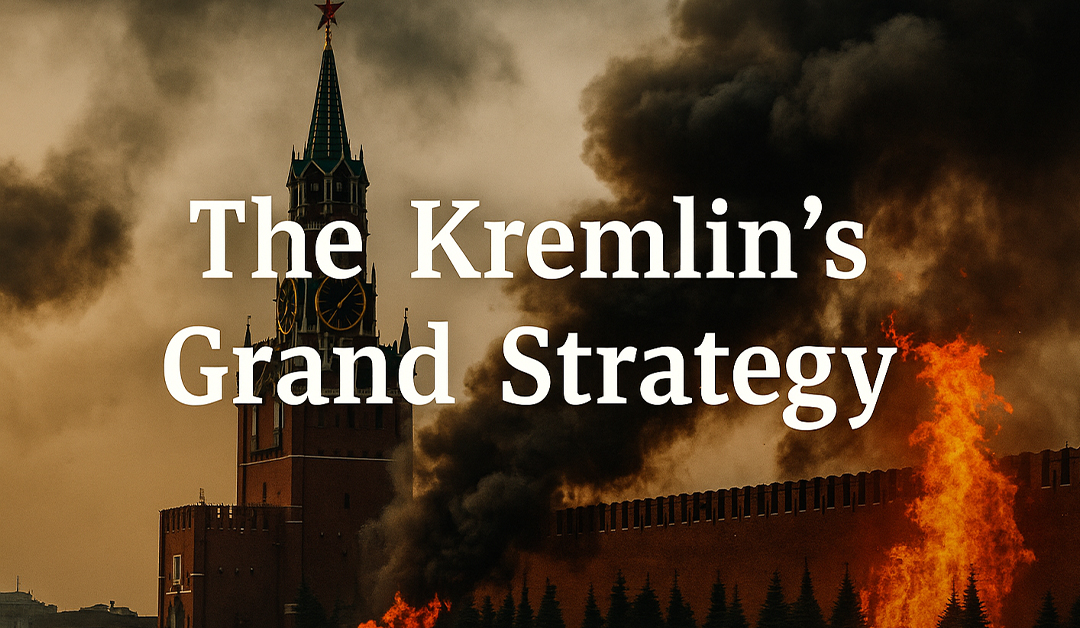Declassified CIA assessment warned of USSR’s "inevitable conflict" mindset and global plans years before the Cold War truly ignited
"The Soviet Government anticipates an inevitable conflict with the capitalist world."
- Central Intelligence Group, July 1946
Months before Winston Churchill’s famous "Iron Curtain" speech helped define the Cold War, U.S. intelligence was already several steps ahead.
A newly declassified 1946 report by the Central Intelligence Group-predecessor to the CIA-paints an astonishingly prescient and uncompromising picture of Soviet foreign and military policy. The report, titled simply "Soviet Foreign and Military Policy," warned in no uncertain terms that the Kremlin’s long-term goal was global dominance, disguised behind a facade of diplomatic engagement and temporary compromise.
The language is unambiguous. The threat is calculated. And the U.S. knew it far earlier than most Americans realize.
🧠 The Kremlin’s Philosophy: Paranoia, Doctrine, and Power
According to the report, Soviet foreign policy wasn’t driven by Russian national interests-but by the dogma and insecurity of the Communist Party elite.
"Its isolation within the Kremlin, ignorance of the outside world, and Marxist dogmatism have significant influence on its approach."
The Soviet leadership was described as paranoid, seeing the peaceful coexistence of communism and capitalism as impossible in the long run. This view wasn’t rooted in geopolitical realities, the report notes, but in an ideological script that justified repression at home and aggression abroad.
"A haunting sense of internal and external insecurity… inherited from the Russian past."
🌍 Divide and Dominate: The Soviet Foreign Playbook
The 1946 assessment lays out a crystal-clear grand strategy:
-
Build domestic strength: through economic self-sufficiency and military superiority
-
Avoid open conflict for now: while gradually expanding influence
-
Exploit division: by disrupting Western alliances and inciting internal discord
-
Mask aggression: behind temporary treaties and "friendly" coalitions
The document chillingly anticipates Soviet control over Eastern Europe, influence campaigns in France and Italy, pressure on Turkey and Iran, and the goal of denying the U.S. access to bases in China, Korea, and Japan.
"The Soviet Union will insist on exclusive domination of Europe east of the general line Stettin-Trieste."
"In other matters Soviet policy will prove grasping… but flexible in proportion to the resistance encountered."
🔥 Key Global Objectives Identified in 1946
-
Eastern Europe: Install puppet regimes in Poland, Romania, Hungary, and Bulgaria. Use "electoral chicanery" if necessary.
-
Germany: Push for a centralized, Soviet-influenced state. Use Berlin as a pressure point.
-
Middle East: Dominate Iran, Turkey, and Greece. Use anti-colonial sentiment to isolate British influence.
-
Far East: Keep U.S. out of China, Korea, and Japan. Push for Communist footholds.
-
Western Europe: Use Communist parties and labor unions to sow division, especially in France and Italy.
-
Latin America: Disrupt the Pan-American system. Undermine U.S. soft power through ideological agitation.
The Soviets weren’t just aiming to win influence-they were playing a long game to dismantle Western cohesion from within.
🚀 Military Doctrine: Mass, Missiles, and Delay
The report also outlines Soviet military posture in stunning detail:
-
Size matters: Even post-WWII, the USSR maintained a massive 4.5 million-man army
-
Ground forces dominate: with mechanized divisions forming the bulk
-
Air power in transition: The Soviets admired Allied strategic bombing and aimed to develop a bomber fleet
-
Atomic ambitions: "A maximum effort will be made" to develop nuclear weapons and guided missiles
"It is within the capabilities of the Soviet Union to develop considerable submarine, light surface, and short-range amphibious forces."
They didn’t have a true navy, but their goal was clear: deter and outmatch the West by investing in nuclear and missile technology.
🧭 Long-Term Patience, Short-Term Disruption
Perhaps the most fascinating-and disturbing-insight is the Soviet belief that they had time on their side.
The document describes how the USSR viewed conflict with the West as inevitable-but not imminent. Their goal was to delay that clash long enough to grow stronger, weaken Western resolve, and make victory certain.
"It is manifestly in the Soviet interest to avoid an overt test of strength… until the Soviet Union has become more powerful than any possible combination of opponents."
In this context, every Soviet treaty, conference, and gesture of goodwill was viewed by U.S. analysts as tactical deception, not a sign of compromise.
🧨 The Cold War Spark Was Already Lit
This 1946 intelligence assessment reads less like a historic curiosity and more like a strategic blueprint for four decades of geopolitical confrontation.
Its insights into Soviet thinking would echo across generations of U.S. policy: from the Truman Doctrine and NATO to containment theory and Reagan’s Strategic Defense Initiative.
Even today, the echoes are impossible to ignore.
"Activity along these lines is constant, though often inconspicuous. Its importance… derives not from any prospect of direct gain, but from its effect in enhancing the relative power of the U.S.S.R."






